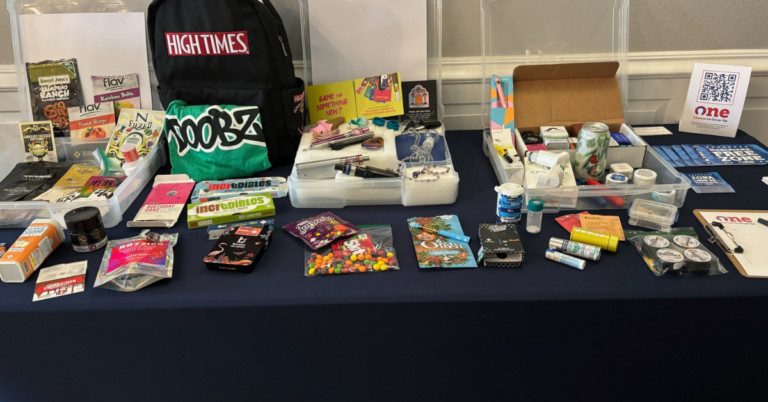One Chance to Grow Up details dangers of today’s marijuana on children
By BRIAN PORTER | The Rocky Mountain Voice
COLORADO SPRINGS – When marijuana was legalized in Colorado more than a decade ago, it became apparent action would be needed to protect youth and One Chance to Grow Up was formed, co-founder Doug Robinson told a group of business leaders here last week.
“Colorado was the first state to legalize it,” he said. “We decided we had to do something about it. We had to focus on protecting kids.”
The citizen-led and funded non-profit was formed and, in the 11 years since marijuana was legalized, has impacted 37 pieces of legislation aimed at improving outcomes for children.
In the early years of the campaign, focus was toward child-resistant packaging, labeling and warnings, advertising restrictions, identification of THC in edibles, THC labeling, medical marijuana advertising limits, potency labeling, restrictions on shaping of edibles, blocking of social consumption clubs, the reduction of home grow plant counts and more activities.
“We took the attitude that the voters passed this and the adults can do what they want, but let’s protect the kids,” Robinson said. “Then we realized a lot of pregnant women were being prescribed marijuana for various reasons.”
In Colorado, there are 65,620 medical marijuana patients, data provided by One Chance to Grow Up reads, and among those 22,620 are from El Paso County, which has 102 medical marijuana dispensaries with another 46 in Pueblo County. Colorado has 370 dispensaries total.
“This has been normalized and promoted,” Robinson said.
Data indicates 8.4% of students try marijuana in El Paso County before the age of 13, rising to 11.8% in Pueblo County. About one-fifth of students in El Paso County used marijuana in the past 30 days, data indicates, and among those 53.4% find it easy or very easy to get.
The Healthy Kids Colorado survey found 59.2% of current high school users consume high-potency variations of mariajuana in forms of edibles, dabbing and vaping.
“Ten percent use it for the first time before they get to high school,” Robinson said.
Data from the Colorado Violent Death Reorting System details 30.4% of suicides among Coloradans ages 15-18 included marijuana present in autopsy toxicology screenings, and in Denver County it rises to 54.5%.
“Marijuana has eclipsed alcohol in toxicology in suicide,” Robinson said. “The marijuana industry used to say no one has died from taking marijuana. They don’t overdose, they kill themselves.”
Dr. Brad Roberts, the chief medical officer with the Pueblo Department of Public Health and Environment, detailed cannabis legislation has led to significant health consequences, including psychosis, in a report he published in 2019.
“There’s a ton of research on this,” he said. “There has been research on it for decades.”
Psychosis is a condition in which a person develops the inability to recognize reality, Roberts explained, ranging from paranoia, illogical thinking, withdrawing and decline in self-care. He detailed his last four shifts in which individuals had a seizure, hallucinations, were suicidal, cut themselves repeatedly, had panic attacks and suffered from anxiety, and in each case cannibis was used.
“It is pretty clear the earlier you use, the more potent and the larger quantity you will eventually use,” he said, and use prior to age 13 has a higher chance of becoming habitual.
The average use he sees from a patient in the hospital is three joints per day, he said.
In one study he referenced, the chance of psychosis was increased five times with daily use of marijuana including 15% THC or more, but no risk was shown for psychosis in low-potency THC of less than 5%. At Children’s Hospital, suicide has soared 600% since 2009, Roberts said, with suicide being the leading cause of death in Colorado for those between the ages of 10-24. Marijuana is present in the toxicology of 42.9% of those suicide deaths, he added, leading alcohol by 16%. Suicide by black youths with marijuana in their toxicology is twice the rate of white youths ages 15-19.
“People think this is the marijuana they used in college,” Robinson said. “It is not. They think this is the stuff that just made you want to eat Cheetos. This is much more potent marijuana.”
The presentation detailed a variety of products with high THC, including eye drops, nasal spray, inhalers, topical body products, lubricants and suppositories.
For more information on the priorities and goals of One Chance to Grow Up visit www.onechancetogrowup.org.

